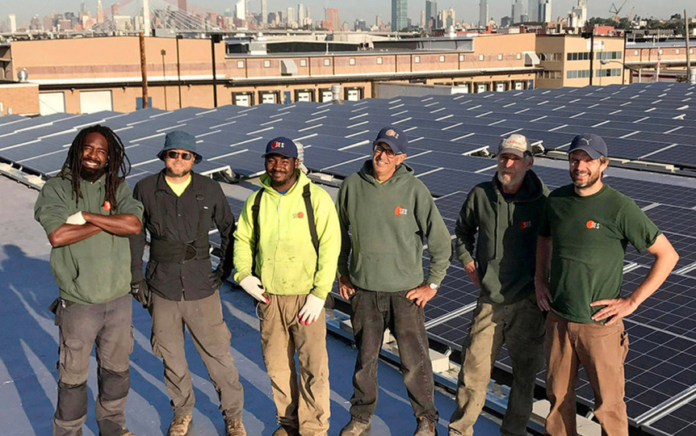New York could build on its strong community solar track record and expand solar access to hundreds of thousands more New Yorkers by lowering regulatory barriers and improving compensation for distributed solar generation, according to a new report by the New York Solar Energy Industries Association (NYSEIA).
The NYSEIA report, Realizing the Potential for Community Solar in New York State: Benefits, Barriers, and Solutions, documents impressive growth in New York community solar since its inception in 2015 and provides policymakers with detailed recommendations for expanding this market segment, which is key to reaching low- and moderate-income customers and meeting the state’s climate change goals.
“Community solar has the potential to dramatically expand affordable clean energy access for millions of New Yorkers, and its rapid growth across the state over the last five years is testament to its benefits as well as the vision and support provided by the Public Service Commission and NYSERDA,” says Shyam Mehta, executive director of NYSEIA. “It is critical that regulatory, legislative and programmatic policymakers take note of the barriers identified in this report and the recommendations advanced to overcome them in order to ensure the continued success of community solar in New York going forward.”
Approximately 50% of individuals across the country do not have access to solar energy solutions, whether because they don’t have suitable roof space, don’t own their home or face financial barriers to going solar. These barriers are even more acute for urban residents and low-income customers. Community solar programs can help address both the physical and financial barriers of going solar. Community solar allows individual subscribers to directly benefit from a solar installation sited elsewhere in the community, eliminating the need for roof space.
As of December 2020, 371 community solar projects were operational in the state, comprising 497 MW of capacity. Nearly 90% of that capacity was installed in 2019 and 2020, reflecting the successful launch and scaling up of the industry. Roughly 63% of all solar capacity installed in New York in 2020 was part of the community solar program, and at the national level the state was the largest state community solar market in terms of 2020 installations and second with regard to cumulative deployments.
Yet despite these benefits and successes, the NYSEIA research report underscores the barriers to future growth in this important market segment. Interconnection hosting capacity constraints, costs to upgrade the electric distribution system, utility interconnection delays, customer awareness and incentive pullbacks each pose significant challenges to community solar’s ability to bring the benefits of renewable energy to more New Yorkers. Community opposition to ground-mounted solar and inconsistent local property tax regimes further cloud the industry’s growth.
One of the largest barriers to community solar – which is particularly relevant for downstate and low-income customers – is the regulatory restriction that community solar projects must be located in the same utility territory as the subscriber. This has led to an extreme disparity in geographical access to community solar projects: Only 1% of Con Edison’s 3.4 million customers would be served by operational and planned projects – compared to 33% in National Grid and 17 % in NYSEG-RGE.
Photo: For a full copy of the report and NYSEIA’s detailed recommendations to address the barriers impeding New York’s community solar growth, click here.




